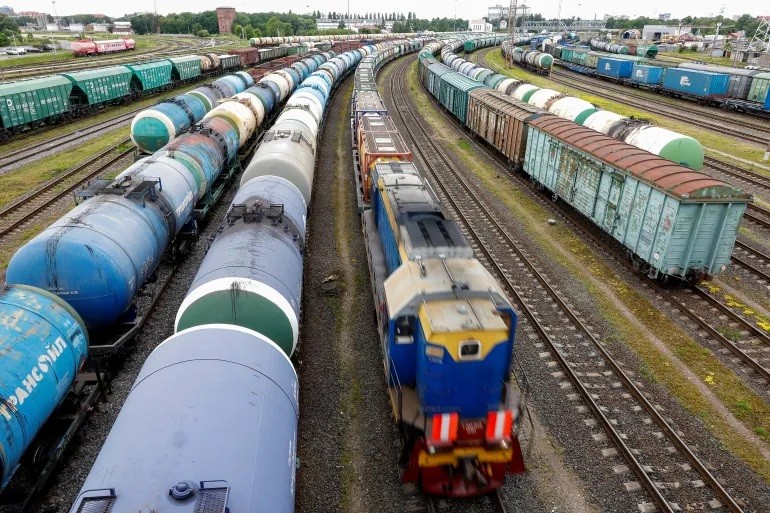 |
| Trains carrying imported goods into Russia in Kaliningrad. (Source: Reuters) |
Over the past few months, there has been a significant increase in imports of Western goods into countries bordering Russia. It is believed that these goods then go to Russia.
Analysis of customs data from 12 EU countries, Norway, the UK, the US and Japan shows that the evasion of export sanctions against Russia will amount to 8 billion euros ($8.5 billion) in 2022.
Among the countries studied, Germany appears to be the largest exporter of sanctioned goods to Russia, followed by Lithuania. Together, they supply half of the goods banned from sale to Moscow by the West.
The study also found that European companies, especially German ones, use third countries to sell their products to Russia. This was evident from an analysis of export data for sanctioned goods, including luxury goods such as jewelry, perfumes, advanced technology, machinery and transport equipment.
In 2022, Western exports of the above-mentioned goods to Russia fell sharply, but soared to Moscow's neighbors.
Nearly half of these “parallel exports” are routed through Kazakhstan. The rest is split between Georgia, Armenia, Kyrgyzstan and other countries.
According to economic analysts, the fact that the 10 packages of sanctions introduced by the EU have proven that the initial restrictions did not work as expected and Russia was quite successful in finding alternative solutions.
Accidental violation of sanctions
After Russia launched a military campaign in Ukraine in February 2022, the US and many allies imposed sanctions that were considered unprecedentedly strong on Moscow.
These measures have also been tightened in recent times, from restricting Russia's ability to transact with banks around the world to imposing a ban on technology imports, a boycott of energy products and a price cap on oil to block Moscow's top source of revenue.
The actual effectiveness of these sanctions is relatively difficult to quantify. According to Alexandra Prokopenko, a former official of the Russian Central Bank (from 2017-2022), this is an unprecedented situation.
"We are witnessing an unprecedented economic experiment. No country in history has been subject to as many sanctions as Russia. There are now more than 13,000 completely different sanctions against President Putin's country. This is more than all the sanctions imposed on Iran, Syria, North Korea and Cuba combined," said Alexandra Prokopenko.
Berit Lindeman, policy director of the Norwegian Helsinki Committee for Human Rights, gave a theoretical example of what could happen, suggesting that some companies could be unwittingly violating sanctions.
“I mean, companies have an order to Kazakhstan and the company itself is perfectly happy to export to that country without knowing that those goods are going straight to Russia,” she explained.
In the 11th package of sanctions, the EU has decided to sanction countries, individuals and entities that avoid policy measures that have been applied by the bloc for a long time and will be applied in the future against Russia and countries that support Russia.
The new sanctions package also bans the transit through Russia of goods and technologies that could be used by the Russian military or contribute to the country's defense and security sectors.
In addition, in order to limit the loading of Russian crude oil or petroleum products at sea to evade EU sanctions, the new sanctions package will ban suspicious ships from docking at EU ports...
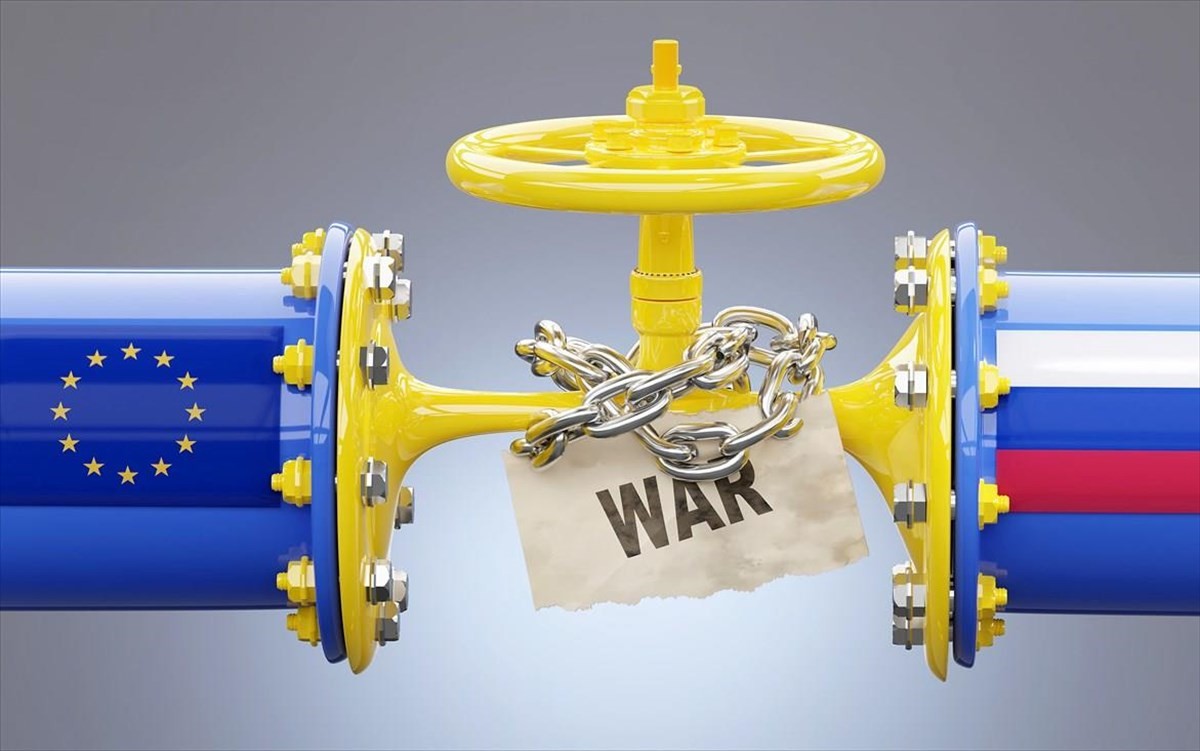 |
| The Kremlin made more money selling gas to Europe in 2022 than in 2021. (Source: Mono News) |
Is the Russian economy sustainable?
Most economists note that the short-term impact of the sanctions has not been as severe as initially expected. The Russian economy shrank by just 2.1% last year—a significantly smaller decline than during the 1998 financial crisis (5.3%) and the 2008 Great Recession (7.9%).
Despite new financial and logistical restrictions on Russian exporters, Moscow’s foreign trade ties remain strong, with Russia’s current account surplus hitting a record $227.4 billion last year, up 86% from 2021.
Energy has played a key role in helping the country withstand 13,000 sanctions. Russia’s energy exports are expected to decline slightly in 2022, but prices for these commodities are rising faster.
Meanwhile, the energy “decoupling” between Russia and the EU has not gone as planned. According to the Russian Central Bank, the Kremlin earned more money from gas sales to Europe in 2022 than in 2021.
According to the European Commission (EC), in February 2023, Moscow's oil export revenue was 41.7% lower than in February 2022.
The International Energy Agency (IEA) revealed that by April 2023, the country's oil exports had risen to their highest level since the Russia-Ukraine conflict began. Exports of this item increased by 50,000 barrels/day to 8.3 million barrels/day in April. The IEA said that Russia may be increasing production to compensate for lost revenue.
Over the past 16 months, Russia has also gradually found more effective ways to adapt to the sanctions.
To get computer chips and other key components, the country is now increasing imports of dual-use products that can be used both for commercial and military purposes.
In addition, many products are also exchanged through "countless anonymous suppliers as well as overland corridors," said the Center for Strategic and International Studies (CSIS).
However, experts say that although Russia is proving to be resilient to Western sanctions, the Russian economy could be weakened in the long term and the situation could get worse.
Grandfather "This is just the beginning. Sanctions against Russia are more of a 'marathon' than a sprint," said Agathe Demarais, global forecasting director at the Economist Intelligence Unit.
Source








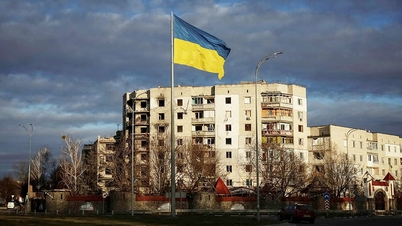

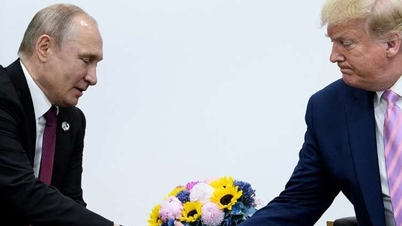

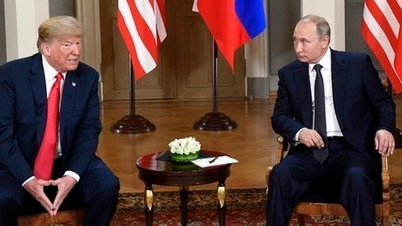



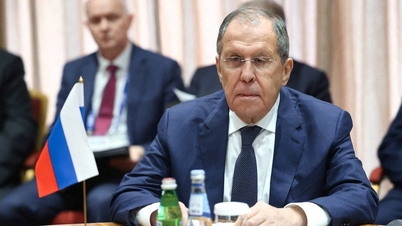











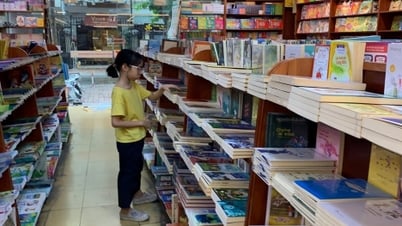




































































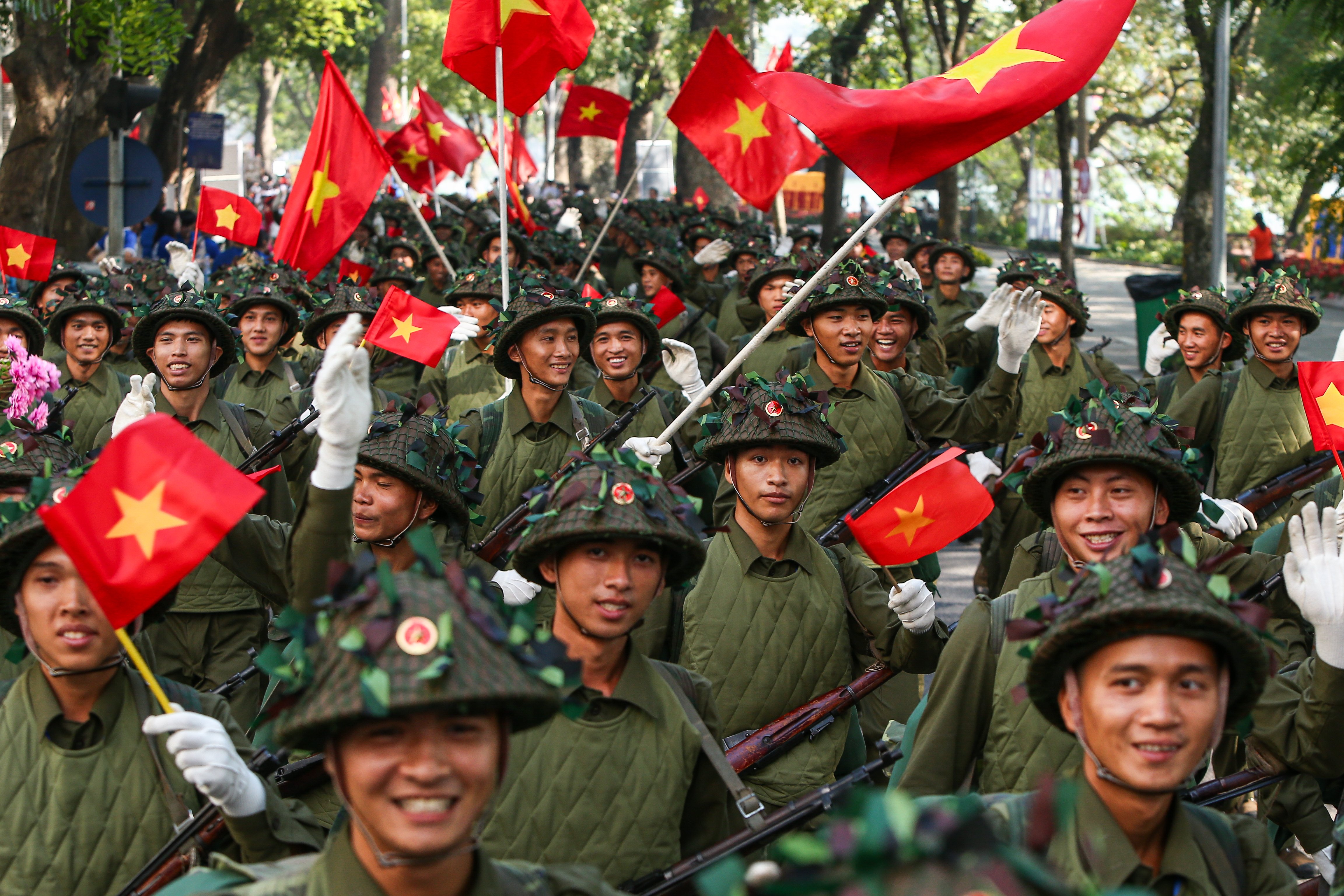



Comment (0)